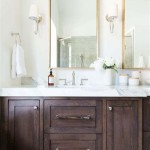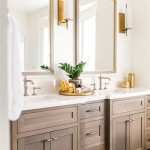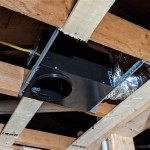How Much Does It Cost To Build a Bathroom in a Room?
Creating a new bathroom within an existing room is a significant home improvement project that can add considerable value and convenience to a property. However, understanding the financial implications is crucial for planning and budgeting. The cost of building a bathroom in a room varies widely, influenced by several factors including the bathroom's size, the quality of materials selected, the complexity of the plumbing and electrical work, and regional labor prices.
A bathroom addition project typically involves various expenses. These include design fees, demolition (if required), plumbing installation, electrical wiring, framing, flooring, drywall installation, painting, fixture installation (toilet, sink, shower/tub), ventilation, and permits. Depending on the specifics of a project, the cost can range from relatively affordable to significantly expensive. Identifying the key cost drivers is essential for budgeting effectively.
Key Cost Factors in Bathroom Construction
Several core components influence the overall cost of building a bathroom in an existing room. Understanding these factors is important for controlling project expenses and making informed decisions throughout the process.
Plumbing: Plumbing work is a substantial cost driver. Connecting the new bathroom to existing water supply and drainage lines can be complex, especially if the intended location is far from existing plumbing infrastructure. Rerouting pipes, installing new supply lines, and establishing proper drainage systems require skilled plumbers and can be labor-intensive. The costs will escalate if the main water line needs to be upgraded to accommodate the new bathroom's increased water demand. Furthermore, permitting requirements for plumbing work exist in most jurisdictions, adding to the overall expense.
The complexity of plumbing is also affected by the type of fixtures being installed. A simple toilet and sink setup will be less expensive than a luxurious shower with multiple jets or a freestanding tub. The quality of plumbing fixtures also impacts the cost. High-end fixtures manufactured from premium materials command a higher price than standard models. The cost of pipe materials (copper, PEX, etc.) can also vary depending on local supply costs and the plumber's preference.
Electrical Work: A new bathroom requires substantial electrical work. This includes installing new circuits for lighting, outlets, and ventilation fans. If a heated floor, whirlpool tub, or high-power shower unit is included, the electrical requirements will increase significantly. Furthermore, ensuring the bathroom adheres to local electrical codes is paramount for safety and compliance. Ground fault circuit interrupters (GFCIs) are typically required near water sources and require a licensed electrician's expertise.
The cost of electrical work also depends on the location of the existing electrical panel and the complexity of running new wires to the bathroom. If the panel needs to be upgraded to handle the increased load, this will add a significant expense. The choice of lighting fixtures, from simple overhead lights to elaborate vanity lights and recessed lighting, also influences the overall cost. Installing smart home features such as automated lighting or a smart mirror can further increase the electrical budget.
Materials and Fixtures: The choice of materials and fixtures significantly impacts the bathroom's cost. Flooring, wall coverings, vanity, toilet, sink, shower/tub, and hardware can range from budget-friendly to high-end. Selecting premium materials like natural stone, designer tiles, custom cabinetry, and high-end fixtures will drastically increase the overall budget.
The size of the bathroom also influences the material costs. Larger bathrooms require more flooring, wall covering, and countertop materials. The complexity of the tile installation, such as intricate patterns or custom designs, also affects the labor costs associated with material installation. Choosing sustainable or eco-friendly materials can also impact the price, as these options often come with a premium.
Estimating the Cost: A Breakdown
To provide a more detailed understanding, breaking down the cost into specific categories is useful. The following provides an estimated range for each aspect of the bathroom construction project.
Design and Planning: Design and planning are often overlooked but are crucial steps in ensuring a successful bathroom build. Hiring an architect or interior designer can cost between $500 and $5,000, depending on the project scope and the designer's experience. This fee covers space planning, material selection assistance, and creation of detailed blueprints. While seemingly expensive, professional design input can prevent costly mistakes and ensure optimal functionality and aesthetics.
Demolition and Preparation: If the existing room requires demolition or alteration, this can cost between $500 and $2,000. This includes removing existing flooring, walls, or fixtures, as well as disposing of debris. The cost can vary depending on the amount of demolition required and the disposal fees in the area.
Framing and Drywall: Framing the walls and installing drywall typically costs between $1,000 and $3,000. This includes building the necessary wall structure, insulating the walls, and installing and finishing the drywall. Costs increase if custom wall shapes or features are desired.
Plumbing Installation: As previously mentioned, plumbing installation is a significant expense. Expect to pay between $3,000 and $10,000 or more for plumbing work, depending on the complexity of the project. This includes running new water lines, installing drainage, and connecting the fixtures. Costs can escalate quickly if major rerouting or upgrades are required.
Electrical Installation: Electrical work typically costs between $1,500 and $5,000. This includes running new circuits, installing outlets and switches, and installing lighting fixtures. The cost can increase depending on the number of fixtures and the complexity of the wiring.
Flooring Installation: The cost of flooring installation ranges from $500 to $5,000 or more, depending on the type of flooring and the size of the bathroom. Tile installation is generally more expensive than installing vinyl or laminate flooring due to the labor involved. High-end tiles and intricate patterns further increase the cost.
Fixture Installation: Installing the toilet, sink, shower/tub, and vanity can cost between $1,000 and $5,000. This includes connecting the fixtures to the plumbing and electrical systems. The cost depends on the complexity of the installation and the type of fixtures chosen. High-end fixtures often require specialized installation techniques.
Ventilation: Installing a ventilation fan is essential for removing moisture and preventing mold growth. This typically costs between $200 and $500, including the cost of the fan and the installation labor. A properly sized and installed ventilation fan is important for maintaining air quality and preventing damage to the bathroom.
Painting and Finishing: Painting the walls and trim typically costs between $500 and $1,500. This includes preparing the surfaces, priming, and applying the paint. The cost can vary depending on the size of the bathroom and the number of coats required.
Permits: Building permits are required for most bathroom renovations. Permit costs vary depending on the location and the scope of the project but can range from $100 to $1,000 or more. Failing to obtain the necessary permits can result in fines and delays.
Strategies for Managing Costs
While building a bathroom in a room can be expensive, strategies exist for managing costs and staying within budget. Proper planning, careful material selection, and strategic decision-making can help control expenses.
Prioritize Needs vs. Wants: Clearly defining the essential features and functionalities is crucial. Distinguishing between needs and wants allows for focusing on the necessary elements while potentially foregoing less critical features. For example, opting for a standard showerhead instead of a multi-jet system or choosing a simpler vanity design can significantly reduce costs.
Shop Around for Materials and Fixtures: Comparing prices from multiple suppliers for materials and fixtures is essential. Different retailers offer varying prices, and online marketplaces can provide competitive options. Looking for sales, discounts, and clearance items can help stretch the budget further. Consider purchasing fixtures and materials in bulk if possible to take advantage of bulk discounts.
Consider DIY Options (If Qualified): Certain aspects of the bathroom build can be tackled as a DIY project, provided the homeowner possesses the necessary skills and experience. Tasks like painting, installing flooring (if experienced), or basic carpentry can be completed independently to save on labor costs. However, it is essential to avoid DIY work for plumbing and electrical components unless properly licensed and certified, as improper handling can lead to safety hazards and code violations.
Obtain Multiple Quotes from Contractors: Gathering multiple quotes from qualified contractors is a crucial step in managing costs. Comparing bids allows for understanding the prevailing market rates and negotiating better prices. Ensure that each quote includes a detailed breakdown of the project scope, materials, and labor costs. Checking references and verifying the contractor's licensing and insurance is also crucial before making a hiring decision.
Plan Ahead and Avoid Changes: Making changes during the construction process can lead to significant cost overruns due to additional labor and material expenses. Careful planning and detailed blueprints can minimize the likelihood of change orders. Before starting the project, thoroughly review the design, material selections, and fixture choices to ensure they meet needs and preferences.
Consider Alternative Layouts: Exploring different bathroom layouts can potentially reduce plumbing and electrical costs. Positioning the new bathroom closer to existing water and electrical lines can minimize the need for extensive rerouting or upgrades. A simpler layout with fewer custom features can also help control expenses.
By understanding the various cost factors involved and implementing effective cost-saving strategies, homeowners can effectively manage the expenses associated with building a bathroom in a room and create a functional and aesthetically pleasing space without exceeding their budget.

How Much Does It Cost To Add A Bathroom 2024 Data

How Much Does It Cost To Build A Bathroom From Scratch

Cost To Add A Bathroom 2024 Guide Forbes Home

What S The Average Cost To Add A Bathroom Neighborly
:strip_icc()/housesprucingbathroom3-7b0fca1959964b7cbcc866ada820aba3.jpeg?strip=all)
This Is How Much It Costs To Add A Bathroom

Bathroom Renovation Cost How Much To Budget For A Remodel

How Much Does It Cost To Add A Bathroom In The Basement

How Much Does A Bathroom Remodel Cost 2024 Data Angi

How Much Does A Walk In Shower Cost 2024 Forbes Home

How Much Does A New Bathroom Cost In 2024 Victoriaplum Com
Related Posts







